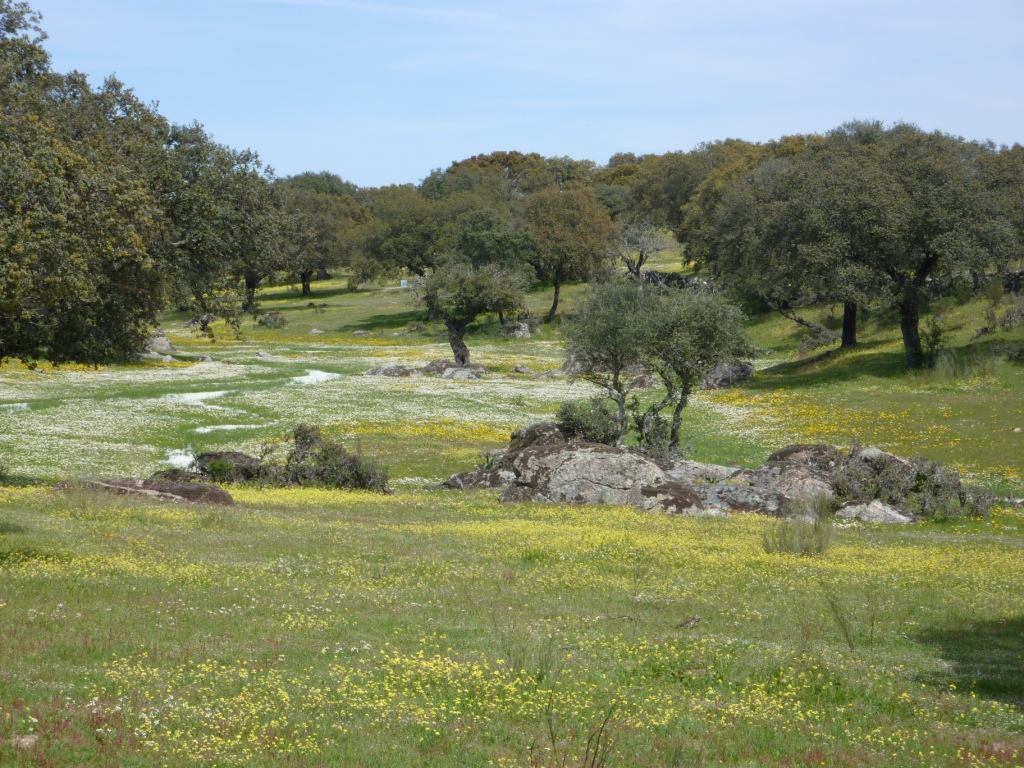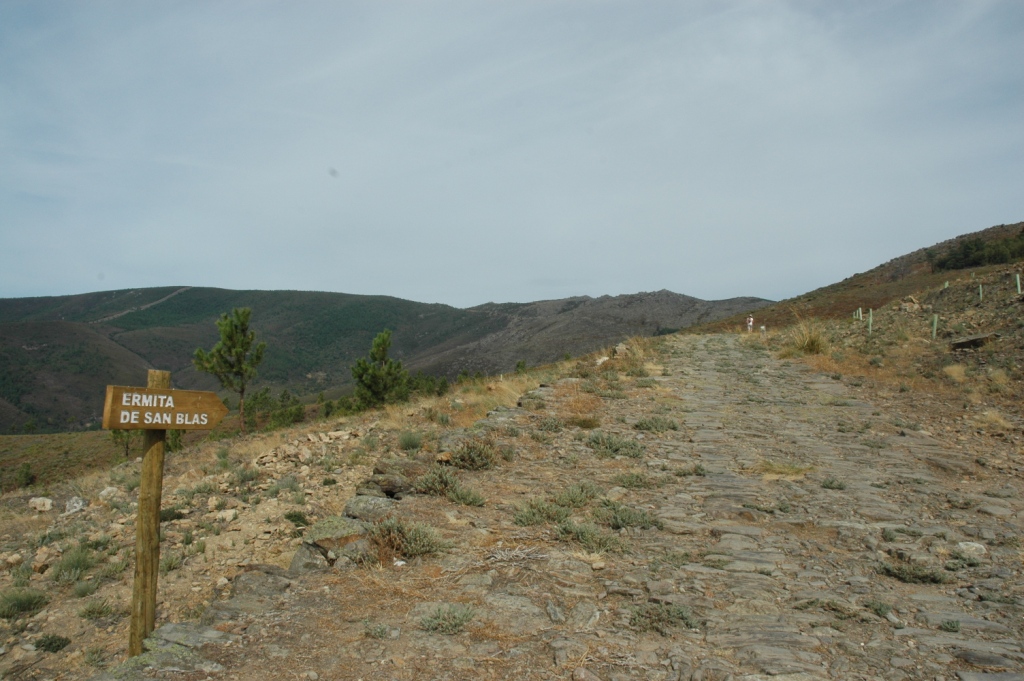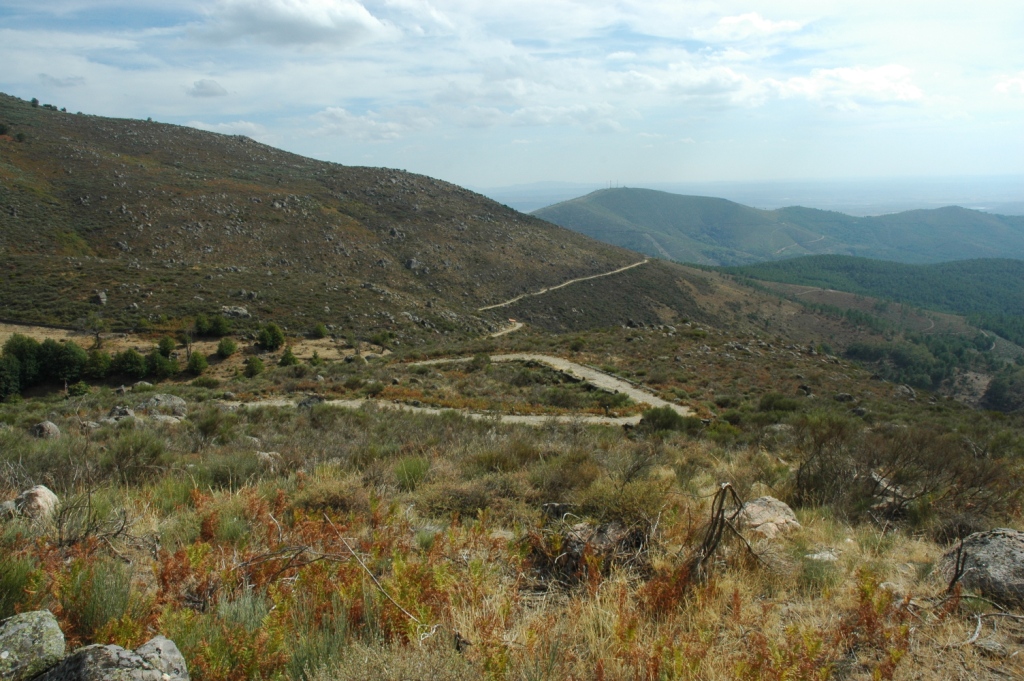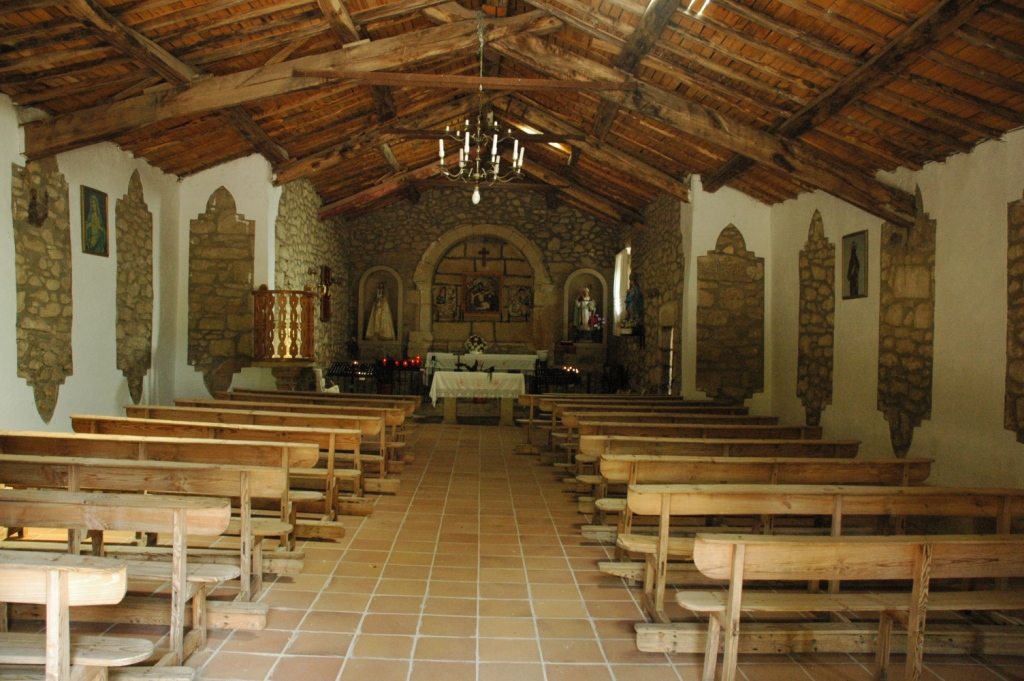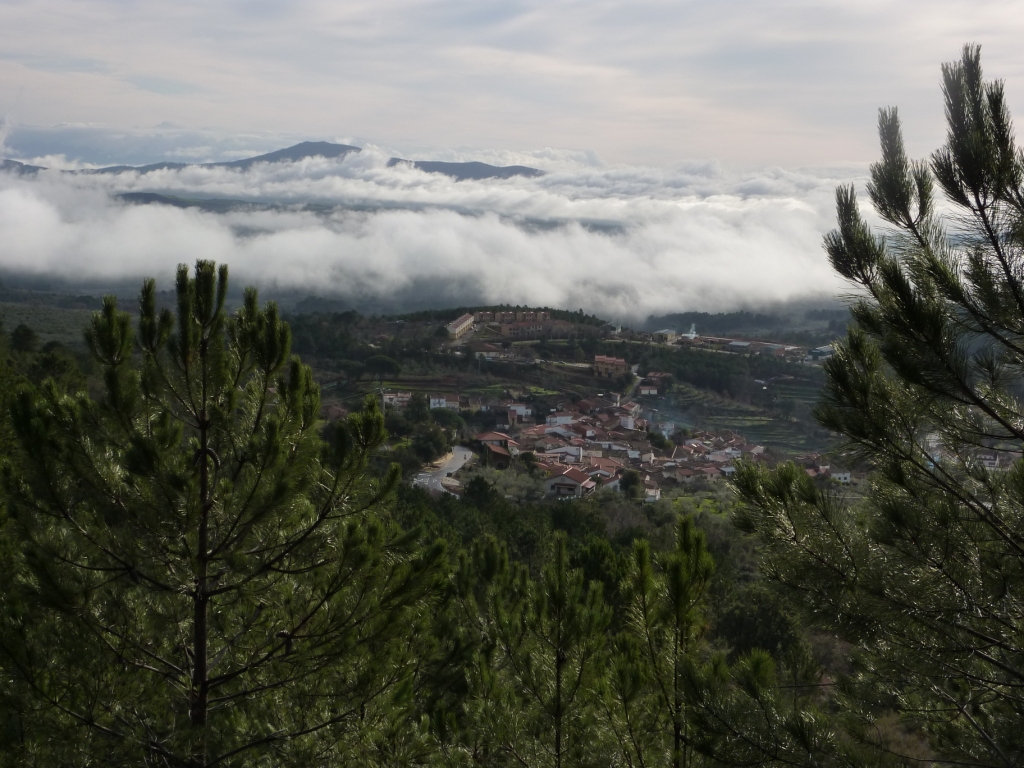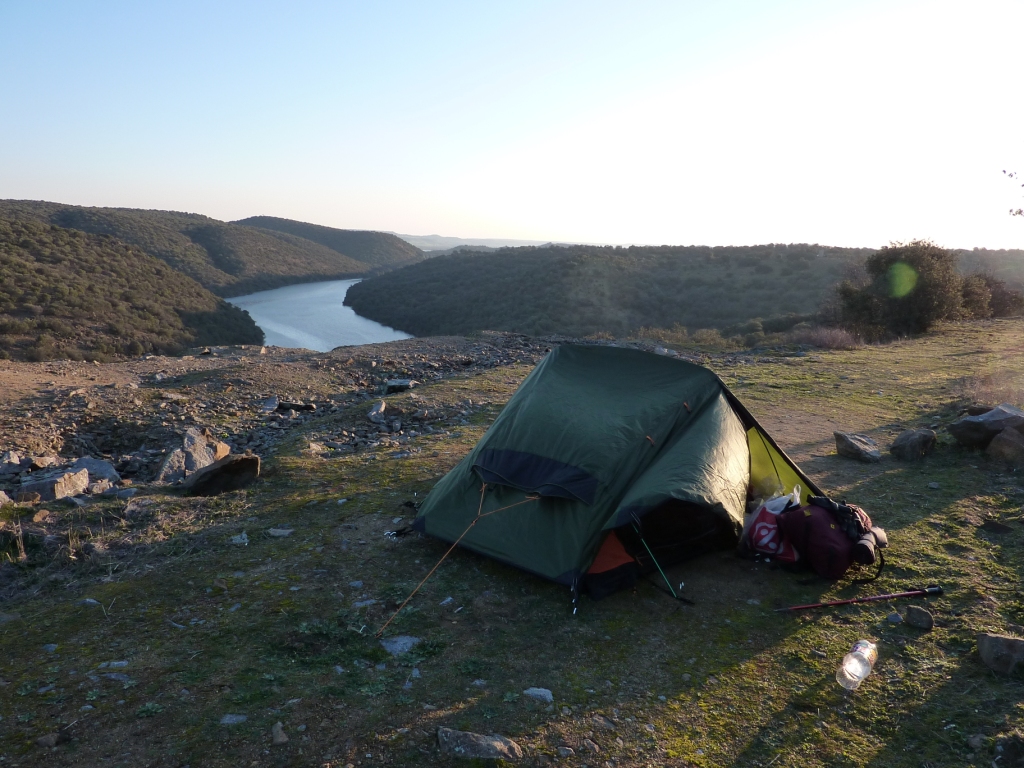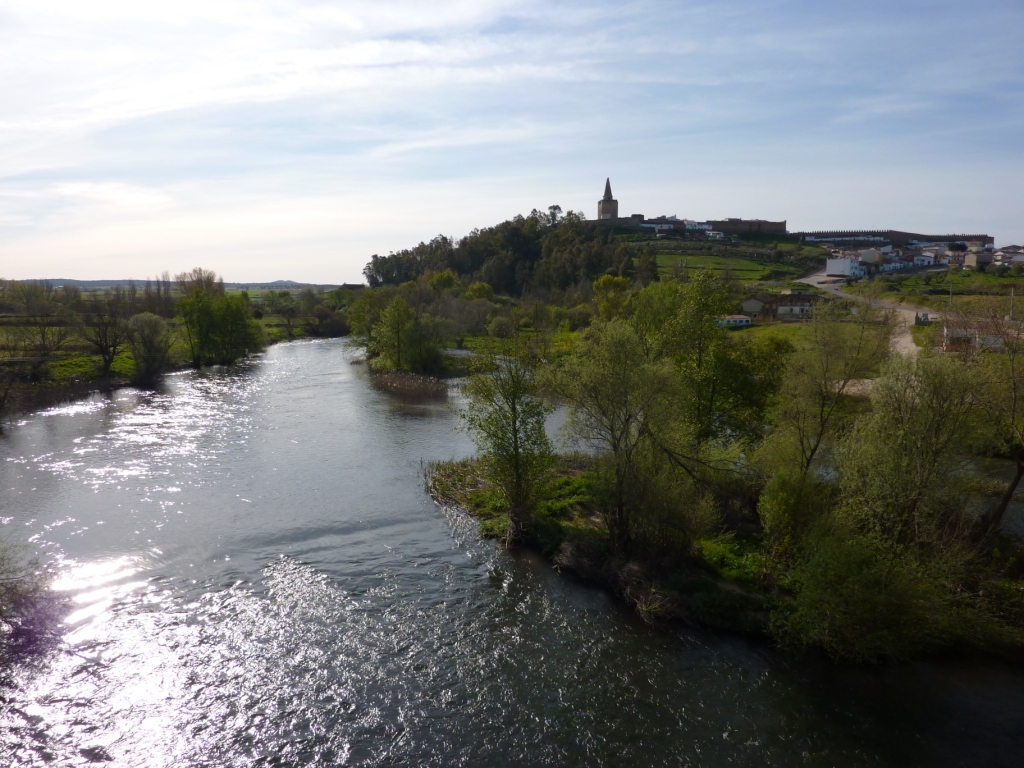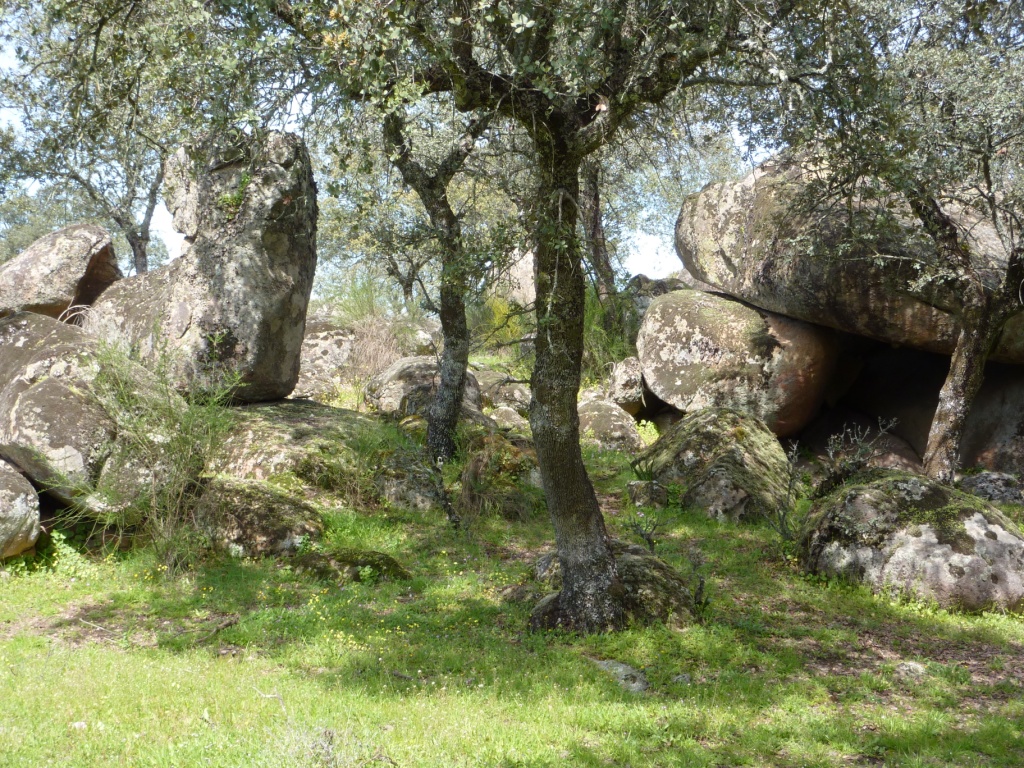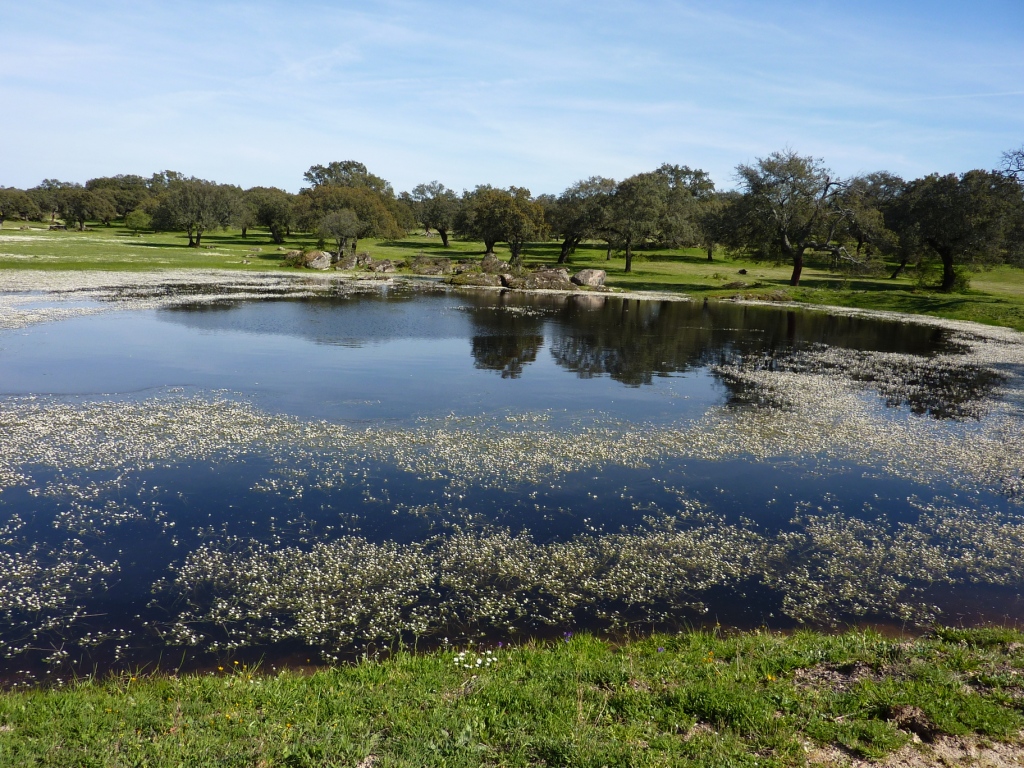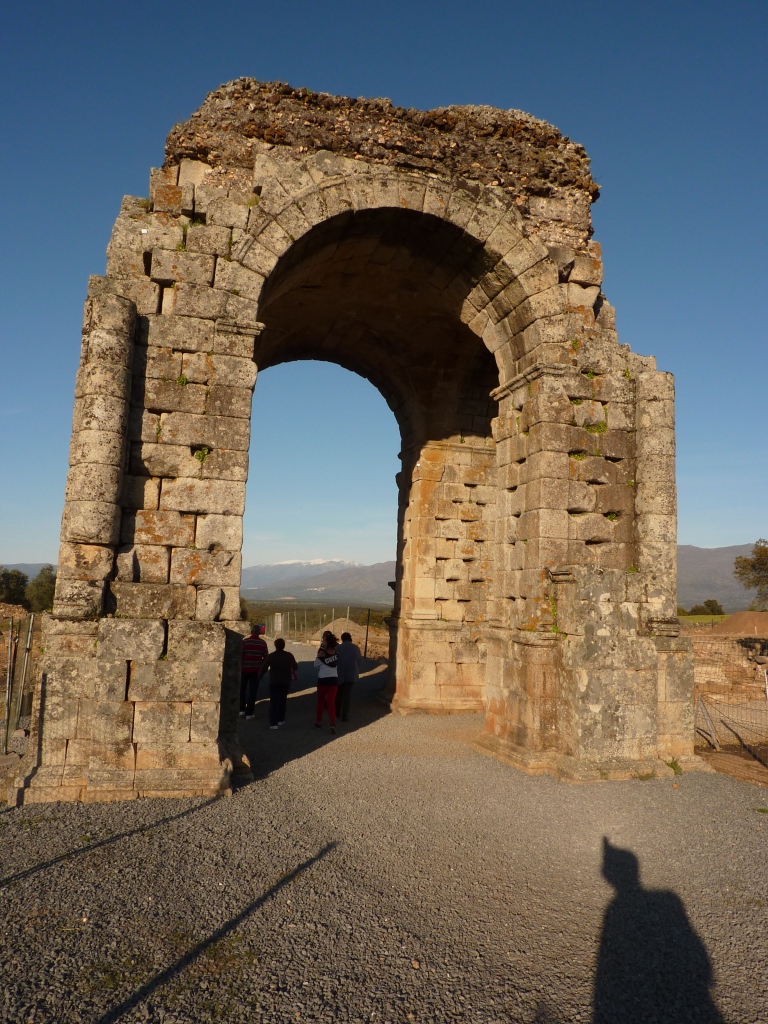The Camino which awakens. Via de La Plata, Caparra.
Beginnings: Learning to walk once more.
On Easter Monday 2010 I was arriving in the Northern part of Caceres where the South and warmer part of Spain ends and the mountains bordering the colder Northern upper plain, the meseta, begin. Caceres is the province of Spain which is my favourite. It is where I live often and I loved walking through it. It was here in the full splendour of Extremadura that I began to feel comfortable with the Camino.
Less than six months earlier I had rarely walked more than a kilometre in one go in the previous twenty years. In 1991 I fell in our house in France and suffered a compound fracture in my left leg which later became infected. My life changed drastically from that point on and walking was always uncomfortable. I put on a huge amount of weight, so had even less desire to walk.
Then in October 2009 I suggested to Pilar one day that we walk to the local hermitage about 4 km up the mountain from where we were living. This was a huge challenge and I began the climb very slowly concerned about my ability to make it to the shrine.
For several years I had wanted to go up this old roman road which used to connect Caceres and Coria with Ciudad Rodrigo in Castilla y Leon. The people of Gata go there once a year for the annual Feast of the Virgin of the Pass. Another few kilometres up from the hermitage is the Pass into Castilla out of Extremadura. Many times I had been urged to take part with locals saying to me, “You can make it: it’s not that far and it’s an easy climb”.
I did make it and was surprised to arrive without much difficulty. I felt exhilarated by the climb and was delighted to reach this beautiful church, cared for by a local man who lives there in the quiet most of the year. He tends the grounds and the fountains and is rebuilding the walls which surround the hermitage on his own. There are a few visitors, usually hikers, and he keeps the church open all day.
At midnight on 31st December 2009 Spanish Television went live to Santiago de Compsostella where someone with a sledge-hammer was breaking down a door into the Cathedral. I learned that this happens ever Jacobean Year, which is every year in which the feast of St. James (July 25th) falls on a Sunday. I began to wonder about trying this walk. Since my trip with Pilar to the hermitage I had continued to explore the Sierra de Gata and managed to push my comfortable daily distance up to 10 km, which I considered miraculous given that that had been the sum of the distance I had walked in any month up till then.
[mapsmarker layer=”26″]
Camino Practice
By February, 2010 I had decided to walk the Camino de Santiago and had bought a guide to the Via de La Plata route. Only on reading the web pages of the Amigos del Camino de Sevilla, did I begin to understand that the Camino is more than just a walk. Part of my preparation had been to read works by Gerald W. Hughes S.J. who has written books on his two long walks from the UK; the first to Rome and the second to Jerusalem. Reading these books and the Amigo’s web page inspired to to begin praying while walking. I began to find Gerry Hughes’ suggestions were coming naturally to me and I was, for instance, saying the rosary, a prayer which had gone into disuse in my life in the sixties but now became a good fit to my footsteps.
On January 20th 2010, I was walking to Hernan Perez, a challenging 13 km from Gata, when I became aware of the presence of a former “friend”. I have written this story up elsewhere. This was the first time this “awareness” of someone who has died had come to me and all the more surprising since it was someone I hadn’t known well and had not thought about for 40 years. However, he was a person who was 100% committed to his Camino and this may have helped me gear up to the Via de La Plata as something more than a long hike.
On February 12th, 2010, I set off to walk the Via Verde de La Jara. I was well laden with tent and good provisions for three days. I chose a most beautiful spot to camp for the night overlooking the Rio Tajo, which flows right across the centre of Spain to enter the Atlantic at Lisbon. There is a walkers’ route, well-marked, all along this marvellous and impressive river.
I was awakened in the night by the Guardia Civil who explained to me that camping was forbidden here. Indeed, it is forbidden in all of Spain outside of Approved campsites. You are not even allowed to pitch a tent to sleep in on your own land without permission. They decided I was harmless and left me to sleep in the freezing night. My 0º sleeping bag did not save me from the coldest night of my life. The 0º referred to the death temperature and my tent was in a gale with the outside temperature several degrees below zero. I was undaunted and continued until two days later when the snow came. Then the Guardia Civil told me not to walk anymore. So I did not reach my intended destination of Guadalupe.
Via de La Plata. A Special sort of Joy.
I began walking from Seville on 17th March, 2010. By 5th April I was setting off from the walled town of Galisteo, heading North knowing I had no place to sleep the night. I had abandoned the idea of a tent and opted for a bivvy bag to which the law has much less objection in Spain. It is also much lighter.
The day’s camino took me through the part of Extremadura where the Via de La Plata passes nearest to Gata, about 60 km to the East. This Easter Monday was a Spring day for artists, poets and lovers to rejoice in. For me, too, it was the moment I began to feel an ease with being a pilgrim. After the little village of Carcaboso the Camino follows an old drove road (Via pecuaria). [These are public rights of way and although many have been eaten up by recent construction, there are thousands of kilometres of these routes which anyone has the right to walk on all over Spain. You can find maps for each Province of Spain here. All the Caminos I have walked use Vias Pecuarias extensively.]
The blue sky of a coldish day charmed the little flowers to open invitingly: the grass was green for these few weeks before the scorching sun turns it brown until autumn. I was where I wanted to be, doing what I wanted to do, singing when I wanted, loudly or softly or badly as I pleased, because there was nobody around for miles and miles. I was in my present, like a child. When I set out on this Camino I had wondered, in prayer, what this Camino was about and the answer had been that all I had to do was enjoy it. I had survived sleeping outside, and enjoyed it, I had continued through the blister period and the groin strain and the solid calves. I had learned not to take a top bunk if possible and even let go of my business cards and bits of my self-image. I was learning how little I need to be well and at peace, profoundly. Prayer was a natural part of each day; repetitive prayer, prayer for others, and the great prayer of thanksgiving. Prayer was easy!
This lonely path, over the dehesa, along the ancient drove road, is one of the longest parts of the Via de La Plata without a Hostel, unless you deviate some 5km, which many do since the hostel owners offer a pick-up service. For me the joy was not to bother and to sleep on the wonderful grass when night fell. In my morning prayers I was beginning to have an awareness similar to that I described with Christopher Shepherd-Smith. It was as if I were being accompanied by Saints. Sheppy-Smith (100% radical) was with me often and also my mother-in-law who always helps fill me with love for my family. Past civilizations had, perhaps, more awareness of the influence of the dead, our ancestors, on our lives than we do. Indeed, many decry the idea, but I can identify in myself some aspects of a collective subconscious and a memory residual from past generations. As I continued walking the Caminos some of the Saints became very significant for me. At this stage, it was all experimental and a joy, but the Camino was certainly awakening me to senses beyond the usual five which were so stimulated by this part of the Via de La Plata.
Down to earth in Caparra.
As I approached the ruins of Caparra evening was setting in and I could make out a small group of people. I could also hear them so I knew they were Spaniards. They were too well dressed to be pilgrims, so I imagined them to be tourists.
There is not a lot to see in Caparra, especially when the information centre is closed. There is an archway which stands proudly over the piles of stones which are being slowly examined by teams of archaeologists’ volunteer slaves. As I neared the little group, one of them turned and said, “Look, here’s an Englishman. Ask him.” “Ask me what?,” I wondered. “Tell him. Tell him,” the man who had misidentified me said, “Tell him what this is here.” So cautiously, because I can be profusely knowledgeable with very few facts, I explained that the stones had been an important Roman city on the Via de La Plata. “Ah,” said the man to the group, “There you are. I told you so.” “No, No,” said one of them, “It’s just a ruined cemetery.” Eventually they bowed to the wisdom of the foreigner. The man who had brought the group here for an evening paseo was also a visitor to the area who had passed Holy Week with these friends. His friends lived very near by in Las Hurdes, the remote Sierra made famous by Buñuel in a controversial documentary/film. There are archaeological remains throughout Spain yet to be explored.
As I moved on night fell rapidly so I chose a spot by the Camino behind some rocks, lay down and fell asleep feeling very much more awake to my pilgrimage than ever. That’s just how Easter should be.

